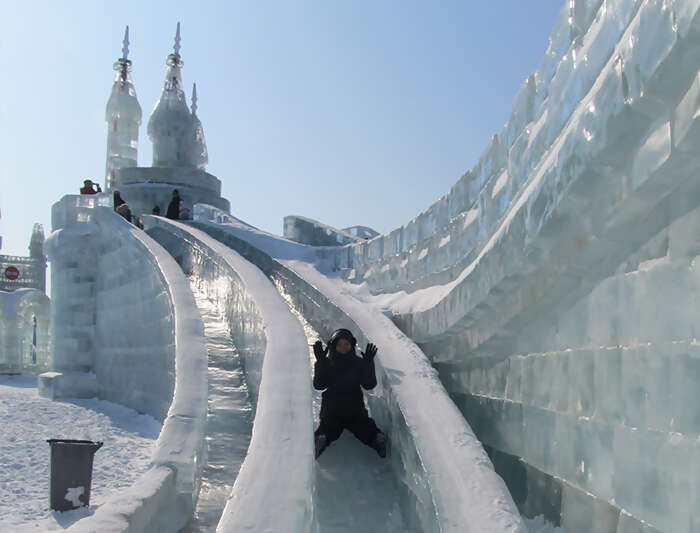 Experience the diverse delights of the Baltic states on this adventurous journey through Finland, Estonia, Latvia, Lithuania, Poland and Germany. From the medieval spires of Tallinn and the funky bars of Riga to the Baroque-styled quirks of Vilnius, hidden delights await. Visit colourful markets, be immersed in art and architecture and trek past Lithuanian lakes. Join us and discover the rich history and fascinating customs of this region on our journey from Helsinki to Berlin.
Experience the diverse delights of the Baltic states on this adventurous journey through Finland, Estonia, Latvia, Lithuania, Poland and Germany. From the medieval spires of Tallinn and the funky bars of Riga to the Baroque-styled quirks of Vilnius, hidden delights await. Visit colourful markets, be immersed in art and architecture and trek past Lithuanian lakes. Join us and discover the rich history and fascinating customs of this region on our journey from Helsinki to Berlin.Highlights
With its perfectly preserved medieval wall and watchtowers, Tallinn's quaint Old Town is a great place to explore on foot
Aukstaitija National Park offers unique opportunities for both activity and relaxation. Kayak across pristine lakes, indulge in home-cooked meals and cleanse yourself in a traditional sauna
Warsaw's Uprising Museum offers a thought-provoking insight into the 1944 Polish resistance against Nazi Germany
Cycle along the endless dunes and stunning beaches of Lithuania's Curonian Spit National Park on a full-day bike tour, making a visit to charming Nida village
History is signposted on every corner of Berlin. The empty shelves of Bebelplatz, the Holocaust Memorial, the confronting Topography of Terror, and of course the remains of the Berlin Wall are just some of the sites paying homage to the city's dark past






- You will visit the following places:
-

Helsinki
Helsinki is the capital and largest city in Finland. Finland's major political, educational, financial, cultural, and research center as well as one of northern Europe's major cities, Helsinki was ranked the most liveable city in the world, in 2011. Approximately 75% of foreign companies operating in Finland have settled in the Helsinki region. The nearby municipality of Vantaa is the location of Helsinki Airport, with frequent service to various destinations in Europe and Asia. Today, Helsinki pulls off the trick of being something of an international metropolis while still retaining a small-town feel. The best time to visit is in summer, when Finns peel off their overcoats and flock to outdoor bars and cafes to enjoy the sunshine.
-

Tallinn
Tallinn is the capital and largest city of Estonia. It occupies an area of 159.2 km2 (61.5 sq mi) with a population of 412,144. It is situated on the northern coast of the country, on the banks of the Gulf of Finland, 80 km (50 mi) south of Helsinki, east of Stockholm and west of Saint Petersburg. Tallinn's Old Town is in the list of UNESCO World Heritage Sites. Tallinn is ranked as a global city and has been listed among the top 10 digital cities in the world. Tallinn is a European Capital of Culture for 2011, along with Turku, Finland.
-

Riga
Riga is the capital and largest city of Latvia, a major industrial, commercial, cultural and financial centre of the Baltics, and an important seaport, situated on the mouth of the Daugava. With 706,413 inhabitants (2010) it is the largest city of the Baltic states. Riga's territory covers 18.60 square miles and lies between 1 and 10 metres (3.3 and 33 ft) above sea level, on a flat and sandy plain. Riga's historical centre has been declared a UNESCO World Heritage Site, and the city is particularly notable for its extensive Jugendstil (German Art Nouveau) architecture, which UNESCO considers to be unparalleled anywhere in the world.
-

Vilnius
Vilnius is the capital of Lithuania, and its largest city, with a population of 560,190 as of 2010. It is the seat of the Vilnius city municipality and of the Vilnius district municipality. It is also the capital of Vilnius County. Vilnius is a cosmopolitan city with diverse architecture. There are 65 churches in Vilnius. Aušros Vartai Street. The icon of The Virgin Mary, Mother of Mercy is venerated in a chapel at the medieval gate at the top of this street. Like most medieval towns, Vilnius was developed around its Town Hall. The main artery, Pilies Street, links the Royal Palace with Town Hall. Other streets meander through the palaces of feudal lords and landlords, churches, shops and craftsmen's workrooms.
-

Warsaw
Warsaw is the capital and largest city of Poland. It is located on the Vistula River roughly 260 kilometers from the Baltic Sea and 300 kilometers from the Carpathian Mountains. In 2012 the Economist Intelligence Unit ranked Warsaw as the 32nd most liveable city in the world. It was also ranked as one of the most liveable cities in Central Europe. Today, Warsaw is considered an "Alpha–global city'', a major international tourist destination and a significant cultural, political and economic hub. Warsaw's economy, by a wide variety of industries, is characterised by FMCG manufacturing, metal processing, steel and electronic manufacturing and food processing. The city is a significant centre of research and development, BPO, ITO, as well as of the Polish media industry. The Warsaw Stock Exchange is one of the largest and most important in Central and Eastern Europe. Frontex, the European Union agency for external border security, has its headquarters in Warsaw. It has been said that Warsaw, together with Frankfurt, London, Paris and Barcelona is one of the cities with the highest number of skyscrapers in Europe. Warsaw has also been called "Eastern Europe’s chic cultural capital with thriving art and club scenes and serious restaurants".
-

Berlin